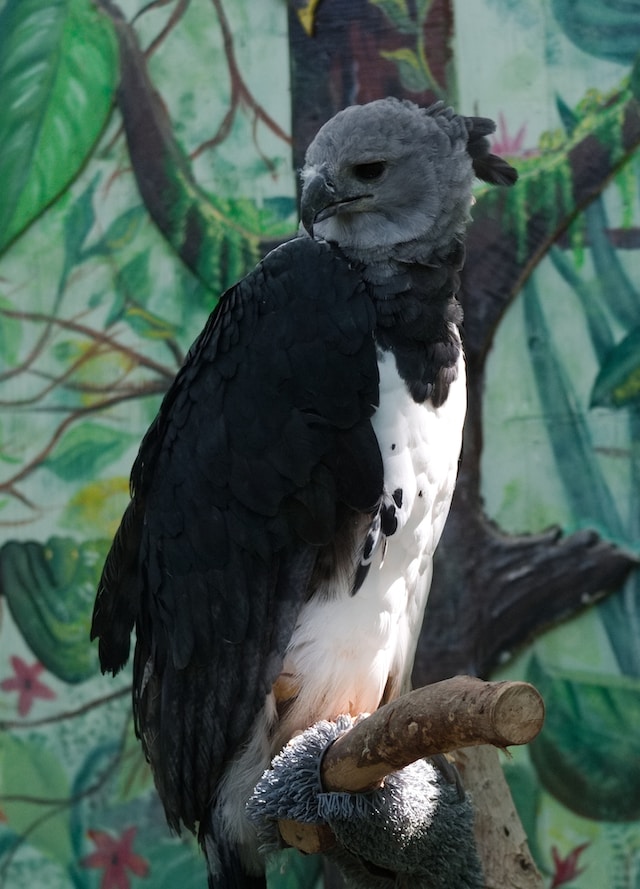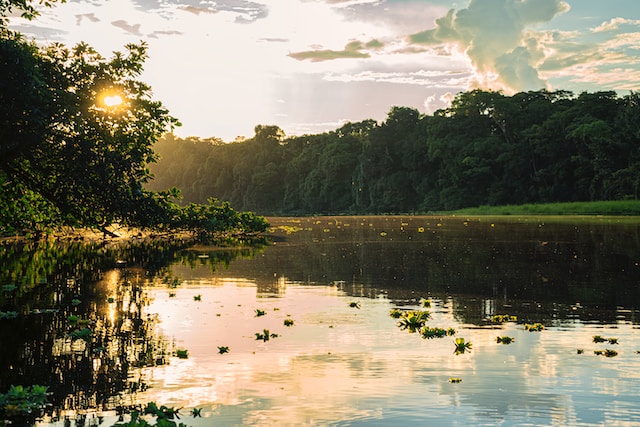As the most biodiverse place on the planet, the Amazon rainforest is home to numerous species that you cannot see anywhere else. Creating a finite list of the weird creatures of the Amazon jungle is in fact much harder than it appears. The array of bizarre species found here is mind blowing.
Due to its sheer size, Amazonia remains vastly unexplored and mysterious. As a result, it is one of the most fascinating destinations on the planet for avid adventurers.
If you have a soft spot for unique species, this doubles its appeal. With about three million animal species, 3,000 species of fish and about 1,300 bird species, it is a wildlife lovers’ paradise.
Journey with us through this wonderland and take a look at its rarest and most bizarre wildlife.
Amazon River Dolphin (Pink River Dolphin/Boto)
There are five freshwater dolphin species in the world, and the Amazon River dolphin is the largest of them. It grows to a length of up to eight feet and about 450 pounds (2.4m and 204kg). Also known as the boto or pink river dolphin, it is incredibly smart. Its brain has 40% more capacity than that of a human being.
Unlike the majority of dolphin species, this one loves its space and often swims alone or in small groups. Another outstanding feature is its ability to rotate its head 180 degrees, which enables it to navigate the murky Amazon River.
Unfortunately, this iconic creature is currently endangered due to human activity. Overfishing of its prey, deforestation and pollution are key among the contributing factors. In September and October 2023, about 178 of these rare freshwater mammals died en masse. Scientists linked the mass deaths to high water temperatures resulting from severe drought. The high numbers represent at least 10% of the population.
Where to See Amazon Pink River Dolphins:
- Anavilhanas Archipelago, Brazil (also home to one of the most spectacular hidden waterfalls of the Amazon, the Cachoeira do El Dorado).
- Pacaya Samiria National Reserve, Peru
- Lake Tefe, Brazil
- Yasuni National Park, Ecuador
Hoatzin
The tropical bird known as hoatzin is a leader among the weird creatures of the Amazon jungle. Some of its nicknames like ‘flying cow’ and ‘stinkbird’ describe its unusual features. For starters, its digestive system is closer to that of a ruminant mammal than a bird – informing the name ‘flying cow.’ The crop is unusually large with two chambers. And the lower oesophagus has multiple chambers. Thanks to these special chambers, it ferments food for digestion purposes. It is therefore one of few herbivorous birds on earth, able to fully digest leaves unlike most birds. The fermentation process gives the bird a strong odor, hence the nickname ‘stinkbird.’ Per the Guinness World Book of Records, it is the smelliest bird on the planet.
Another unusual feature is the pair of claws on the wings of young birds. They aid in movement through trees and disappear as the birds mature and become more stable. The hoatzin lives in remote wetland areas of the rainforest; areas that are still free from deforestation. This and the terrible taste of its meat have kept its population stable.
Where to Spot the Hoatzin:
- Pacaya Samiria National Reserve, Peru
- Orinoco River Basin, Venezuela
- Napo River, Ecuador
- Mahaica River, Guyana (fun fact: the hoatzin is Guyana’s national bird)
Bald Uakari Monkey
Adding to our collection of weird creatures of the Amazon jungle, the bald uakari is a strange-looking animal. It spots a completely bald, bright red face and shaggy orange fur. Unlike most primates, it has a very short tail. But it is just as agile as all other monkeys, relying on the limbs to move around trees. Like some primates, they are able to walk on their hind feet.
Exclusively found in the Amazon rainforest, this species is vulnerable per the International Union for Conservation of Nature (IUCN) list. Its reproduction rate is remarkably low – one infant per female, every two years. Humans also pose a threat as they often capture them. Though these monkeys once thrived in southern Colombia, they vanished due to deforestation.
Where to See the Bald Uakari:
- Yavari Mirin River, Peru/Brazil Border
- Tamishiyaco/Tahuayo Reserve, Peru
Harpy Eagle

The harpy is one of the largest eagles on the planet, and the biggest raptor in the Amazon jungle. Its wingspan can extend up to seven feet (2.13 meters). It is an incredibly strong bird with powerful five-inch talons, longer than bear claws. With these talons it can grip prey as large as sloths, armadillos and monkeys. It can grow to a weight of up to 20 pounds (9kgs) and a length of 3.6 feet (1.1m).
This bird is strictly carnivorous and with no known predators, sits at the top of the food chain. Among its distinctive features are piercing eyes and a feathered crest that gives it an aura of majesty. Notably, these eyes have about eight times the power of human eyes. Despite the huge build, it can fly at speeds of up to 50 miles per hour (80.5km/h).
The IUCN currently lists the harpy as ‘Vulnerable’ mostly due to habitat loss. (It is critically endangered in Central America and Mexico). One harpy requires about 100 square kilometers of habitat to thrive. Due to the dwindling populations, it is a rare sight even in Amazonia.
Where to See the Harpy Eagle:
- Yasuni National Park, Ecuador
- Darien National Park, Panama (Fun fact: the harpy is the national bird of Panama)
Arapaima (also Piracucu, Paiche)

Among the thousands of fish species in Amazonia, the Arapaima stands out as the largest of them all. It can weigh up to 440 pounds (200kgs) and grow to a length of 10 feet (3m).
However, its gigantic build is not the only reason it makes our list of weird creatures of the Amazon jungle. The Arapaima is also one of the few air-breathing fish species in the world. It can survive for up to 24 hours out of water. Thanks to this feature, it comfortably survives even in waters with low oxygen levels. However, it can only stay under water for between 10 and 20 minutes at a time.
To feed, it often creates a vacuum in its mouth that sucks in nearby food items. It also leaps out of water to capture small primates, frogs and lizards. In some instances, it rams prey (and predators too) with the force of a torpedo. This strange fish can survive piranha-infested waters due to its armor-like exterior. The exterior of its scales is very hard, with fibers placed at right angles to enhance the toughness. These scales are however flexible enough for easy movement.
Where to Spot the Arapaima:
- Pacaya-Samiria National Reserve, Peru
- Mamiraua Sustainable Development Reserve, Brazil
- Rio Negro near Anavilhanas Archipelago, Brazil
- Rupununi Region, Guyana
Mata Mata Turtle
Another native of Amazonia, the mata mata turtle, is considered one of the weirdest turtles on the planet. It sports a long snorkel-like snout and a flat head that is wide and triangular. There are ridges and warts on its head and its eyes look like pennies with holes. The shell has spikes and ridges further adding to its odd appearance. Sometimes, it grows weeds and algae on its shell, a disguise that makes it resemble decaying wood. The bizarre looks are great for camouflage – ideal given that it is carnivorous. It often uses vacuum suctioning to feed on fish.
Another strange feature of the mata mata is its flaps, which sense vibrations in water. These aid in hunting and help it sense when a big predator enters the water. They are an important asset since it has very poor eyesight. It also has spines inside the throat, an uncommon feature seen only in sea turtles but not their freshwater counterparts.
Though it is an aquatic species, it is not a very good swimmer in open waters. It prefers shallow pools full of debris and muddy beds. Due to its elusive nature and expert camouflage, this is one of the hardest creatures to spot.
Where to Find the Mata Mata Turtle:
- Pacaya-Samiria National Reserve, Peru
- Pantanal Wetland Region, Brazil
Explore the Wonders of the Amazon Rainforest

The weird creatures of the Amazon jungle come in every shape and size. These are just a small fraction of the bizarre forms of life you can expect to see here. Though it is a challenging terrain for explorers, Amazonia is full of surprises in its incredible diversity.
Aside from its unique animal species, it also offers intriguing cultural experiences with indigenous people. It is home to extensive cave systems, spectacular forests and high-adrenaline adventure destinations. Whether you are a nature lover, an adventurer or a cultural buff, there is plenty to see and do. Add it to your bucket list and plan for the ultimate lifetime trip to this amazing destination.

